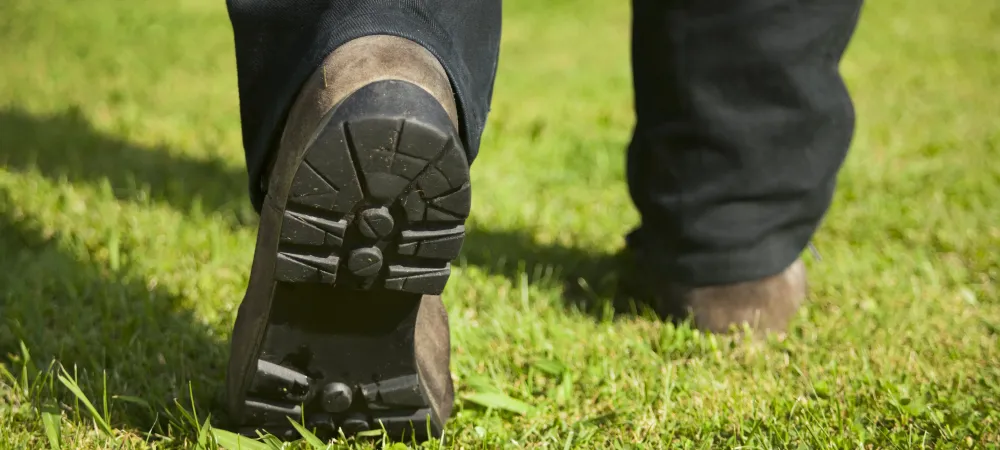It’s Time to Aerate And Overseed Your New Jersey Lawn

As temperatures start to cool down in New Jersey, you might think that your lawn doesn’t need anything other than one last mowing session. However, fall is the perfect time to give your lawn a little extra care to make sure it stays full and healthy in the future. One of the most important care treatments for your lawn is core aeration and overseeding, which helps to break up compacted soil and improves the quality of the grass in your yard. If your lawn is looking lackluster and is in need of a touch-up, the professionals at Harvest Lawn Care can make sure your lawn remains in great condition for many years to come.
A Few Signs Your Lawn Needs Aeration and Overseeding:
- Your lawn is heavily used or trafficked by kids or pets
- The soil feels dry, spongy, or compacted, instead of crumbly and easy to dig up
- You have lots of patches of moss on your lawn, or large bare or thin patches of grass
- There is a thick layer of thatch (over a quarter of an inch) in between the grass leaves and the soil
Thatch and Compacted Soil In Your Lawn
The soil in your yard can become compacted or develop thick thatch by a number of different causes, sometimes even because of how the grass in your lawn was initially laid down! If your home is under construction, the soil in your yard could have been stripped away or severely impacted by traffic from heavy construction vehicles. If your lawn was established with sod, the different texture and quality soils might be interfering with your lawn’s ability to drain water effectively and develop good grassroots systems. Soil also tends to become compacted over time due to foot traffic, soil type, too much or too little watering, and different grass species.
All of these factors and many others can lead to a soil that is tightly packed and topped with a thick layer of thatch. Thatch is a layer of primarily dead and some live grassroots that lies between the leaves of your grass and the soil below. While about a quarter of an inch of thatch is good for your lawn, an excessively thick layer of thatch can negatively affect your yard. Thick thatch can prevent air, water, and important nutrients from penetrating the soil to the grass plants’ roots, reducing the overall health of your lawn and causing the sparse patches characteristic of a lawn that needs aeration.
How Aeration and Overseeding Helps Your Lawn Look Its Best
If your lawn looks like the one described above, core aeration and overseeding can help restore its health and appearance. This process works by using an aerator machine that mechanically punches holes into your lawn. These holes help to separate layers of compacted soil and thatch in your lawn, creating space for better root system growth and allowing better access to air, water, and vital nutrients for your grassroots.
The next step in the process is overseeding or planting new grass seed right on top of the existing grass on your lawn. Overseeding your yard will help to fill in thin or bare patches, making your lawn look full and lush. You should only overseed your lawn after you have it aerated to give the new grass seed the best chance of germinating in the de-compacted, spacious soil. Without aeration, a lot of the new grass seeds wouldn’t be able to make it past the thick layer of thatch and into the soil to start growing.
Early fall is the best time to aerate and overseed your lawn in New Jersey. Even though temperatures are slightly cooler, new grass seeds are still able to germinate but won’t have to face competition with summer weeds for nutrients and water. Don’t wait until mid-fall to aerate and overseed, however, as the grass seeds won’t be able to grow if it is too cold.
How To Prepare Your Lawn for Aeration
Before having your lawn aerated, there are a few important steps to take to make sure your yard is ready for this process and to achieve the best results. First, you should make sure the grass on your lawn is cut fairly short. This will make it easier for the aeration machine to do its work, and allow the machine to punch deeper holes. Second, you should make sure that your lawn is watered about a day before aeration. Watering your lawn can help kickstart the process of breaking up the soil even before aeration takes place. Finally, you should mark or make note of anything that lies hidden under the surface of your soil, such as irrigation systems or tree roots, so that the aerator can avoid these and prevent potential damage.
Make Sure Your Lawn Looks Its Best With Harvest Lawn Care
If you want to ensure that your yard will look healthy, lush, and full in future seasons, call the professionals at Harvest Lawn Care to schedule core aeration and overseeding service for your New Jersey lawn. This is just one of the many services we offer to help you get a noticeably beautiful lawn that stands out in your neighborhood.